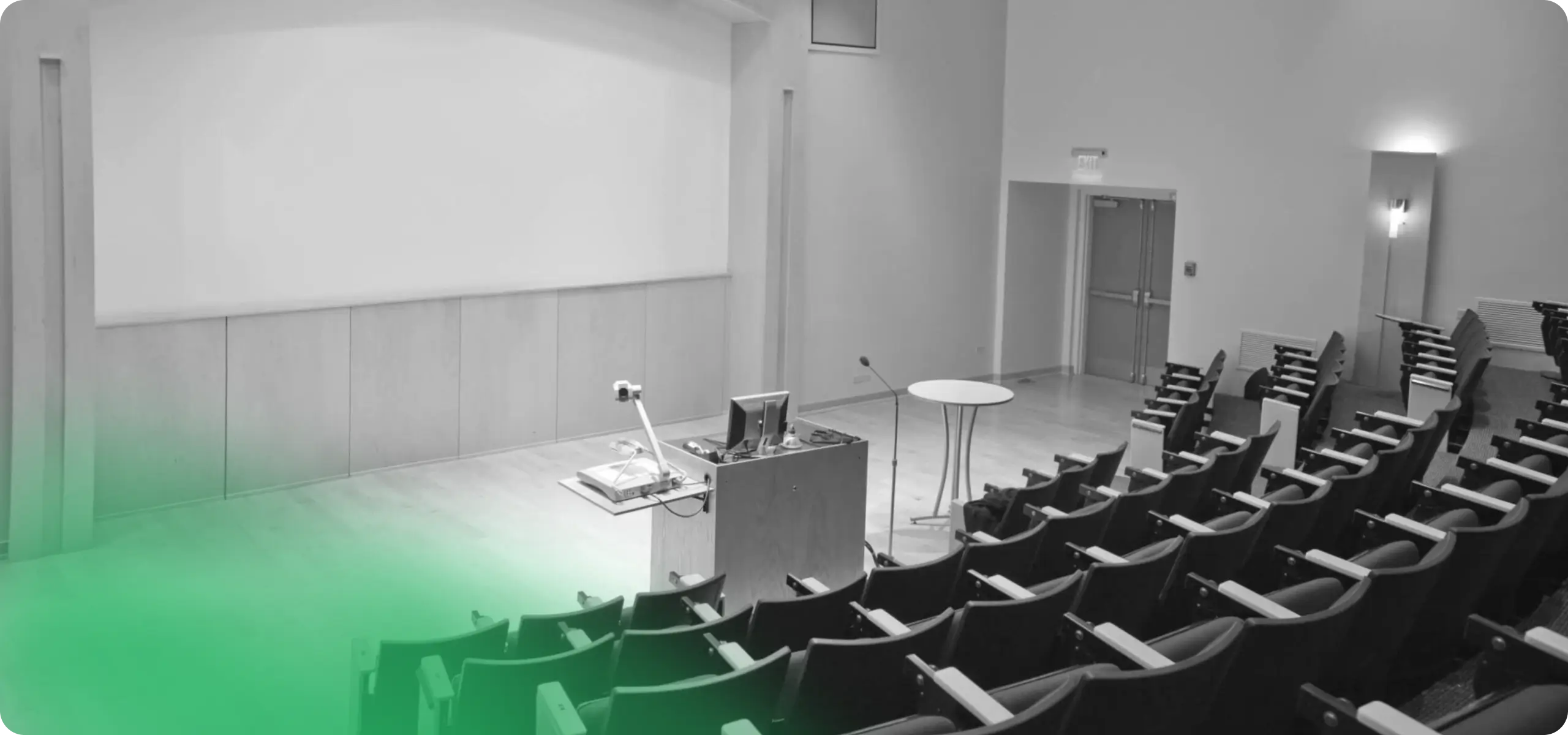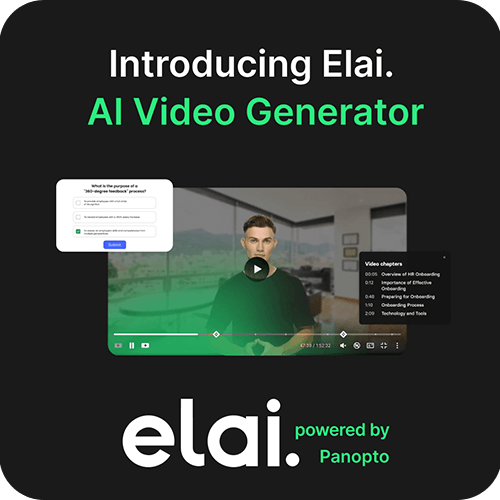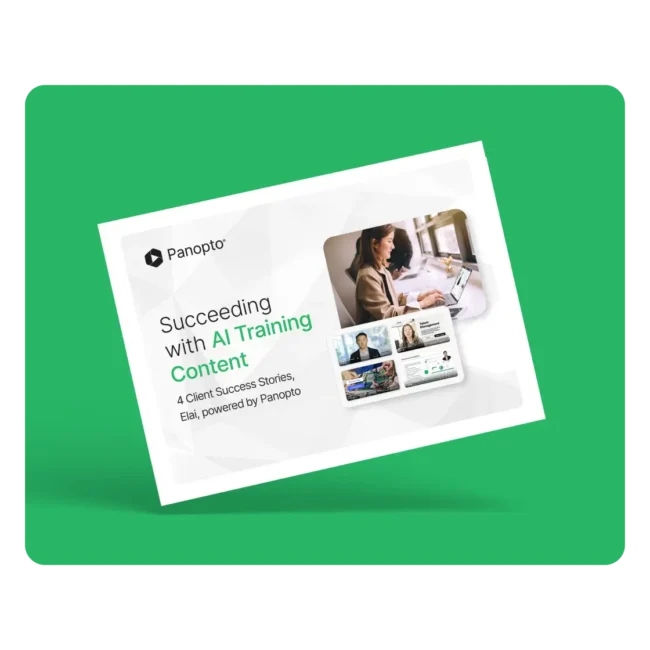- Academic Technology
Hybrid vs. Blended Learning, The Flipped Classroom… What’s the Difference?

With the significant shift to online learning, we’ve also started using new terminology: hybrid vs blended learning. You’re probably very familiar with one of those terms— maybe you’re already using a blended learning model, or talking about the differences between synchronous and asynchronous learning at your college or university — but there are often important distinctions among online learning terms. Understanding these differences will help you find the best fit for your classroom and clearly communicate your chosen strategy to administrators, colleagues, parents, and students. Read on for a quick vocabulary refresh.
Learning Models
Blended learning or blended classroom
The term “blended learning” refers to a category of different learning models. Blended learning models use a cohesive, integrated combination of face-to-face instruction at a brick-and-mortar location and online instruction.
The online portion may include live webcasting, recorded videos, and other forms of technology that complement and enrich the in-person instruction, rather than replace or repeat it. Blended learning differs from other types of online learning in that the student has some control over the time, place, and pace they go through the online content.
Hybrid learning, hybrid classroom, or hybrid teaching
In a hybrid learning model, faculty decide which portions of the course are best taught online and which are best suited for in-person class time, and all students follow the same combination of online and in-person learning.
The term “hybrid learning” is often used interchangeably with “blended learning,” but they are not one in the same. The online instruction in a hybrid classroom typically makes up a significant portion of the course and replaces some of the face-to-face instruction, rather than complementing it.
Flipped classroom
A flipped classroom is a form of blended learning. In this specific approach, the online portion of the course is used to share new information with students before in-person class time. When students attend the class, they build off what they’ve learned online by engaging in face-to-face discussions, activities and collaboration.
HyFlex
The HyFlex model is a hybrid-flexible approach that allows students to choose and move between in-person and online participation, depending on which works best for them throughout the course. Students have the opportunity to reach the same learning outcomes, no matter which type of instruction they choose.
HyFlex requires educators to build both a fully in-person experience and a fully online experience in a single course, allowing students to choose either path or move between the two. Originally developed to offer accessibility and flexibility to working adult students, this format has gained renewed attention during the pandemic.
Elements of blended learning models
Face-to-face / in-person
Face-to-face or in-person instruction refers to those times when an instructor and students interact in the same physical space. Within a blended learning model, this is the brick-and-mortar classroom time when teacher-guided instruction, discussions, and activities take place.
Virtual classroom
A virtual classroom refers to the online learning environment where instructors can present information and students can interact with their instructor and each other. The virtual classroom experience is live and synchronous, meaning the instructor and students are logged in at the same time. To learn more about how to implement a virtual classroom, read the ebook: 9 Must-Haves for a Successful Virtual Classroom.
Remote school
Remote school is a term that describes a move from in-person education at a physical school building to a fully distanced approach in which students learn at home, typically due to an emergency situation such as the coronavirus pandemic. Instruction can happen through video conferencing as a class or various individual activities, both online and offline.
Types of learning and teaching
Asynchronous learning
Asynchronous learning occurs when a student is not directly connected with an instructor or other students in real-time. They may be engaged in online or offline activities, such as watching educational videos created by the professor or by another educator.
Synchronous learning
Synchronous learning happens when a student has direct, live interaction with a professor or other students in real time. This term typically refers to online learning via video conferencing. Students could also engage in offline activities while they are simultaneously connected to their professor or classmates online.
Trimodal teaching
When an instructor engages in trimodal teaching, they are doing three things simultaneously: teaching students in-person in the physical classroom, teaching remote students live through an online platform like Zoom, and recording the classroom instruction for future viewing. This type of teaching may be used in a HyFlex model in which students can move freely between in-person and remote learning as they choose. It can also take place in a classroom model in which students are separated into distinct in-person and remote groups.
Students in the classroom and students who are attending remotely are able to interact in real time. This type of teaching requires the use of in-classroom cameras and microphones, a digital whiteboard, a video platform, and other technology to make the teaching and learning experience as seamless as possible.
Active learning
Students engage in active learning when they are participating or interacting in the learning experience, rather than passively taking in information. Hands-on activities, discussions, problem solving, and group work are examples of active learning. In contrast, listening to a lecture or watching a recorded video are examples of passive learning. By activating students’ brains in different ways, active learning can help them process, learn, and remember information.
Distance learning
Distance learning happens when students and faculty are in separate locations or classrooms. They connect using online tools and technology.
eLearning
eLearning is short for “electronic learning.” It can refer to an entire online-based course or specific digital aspects of a hybrid learning model. eLearning takes place online or through the use of digital tools and resources. eLearning can include live and recorded content, and it can happen within the physical classroom or in other locations. Educators can use eLearning for whole-group instruction, small-group activities, individualized work, flipped classroom lessons, and homework assignments.
Terms specific to online learning
Breakout room
A breakout room is a separate session during a virtual meeting or class. Instructors can assign students to small groups in different breakout rooms for discussion or collaboration. The instructor can then join and move through individual breakout rooms to check on each group. Audio and video are separate within each breakout room, and the instructor can set a time limit, send announcements, or close the rooms to bring the group back together.
Roomers and zoomers
Thanks to those instances when teachers are simultaneously teaching students in the physical classroom and online, the phrase “roomers and zoomers” was born. A classroom that includes “roomers” (students attending class in-person) and “zoomers” (students who are logged in to attend class virtually) allows the whole class to have synchronous learning time. But it also requires teachers to toggle between the two groups in a way that keeps everyone engaged, connected, and supported.
Zoom fatigue
After attending many classes online, students may begin to feel a lack of motivation or energy associated with virtual learning, known as “Zoom fatigue.” (It happens in the corporate world or social meet-ups too!) The reasons for that fatigue? Being interactive through a device in “live” time requires lots of eye contact, seeing yourself in video chats, reduced mobility, and an extra effort to convey nonverbal cues.
As an alternative, recorded videos can provide students with the opportunity to self-pace their learning. We predict that schools will shift away from using Zoom as they move back to in-person learning, and instead use Panopto to record lessons directly and make them available in the Panopto library or class folder.
Video will continue to play a critical role
While these various phrases and terms have been around for a while, it wasn’t until the massive shift to online learning during the pandemic, that words like “synchronous” and “asynchronous” became part of our daily vernacular! As schools open their campuses to in-person learning, the vocabulary will evolve once again. Classrooms that were set up to support video conferencing may now support lecture capture so that students can go back and watch recorded lectures. Flipped videos that were created during the pandemic to deliver information to students may now become part of the regular class syllabus.
What we learned during the pandemic is that many of the tools faculty and students relied on and skills they developed to keep schools open, will continue to serve them well, even as campuses open to in-person learning.
Whether you’re looking to implement hybrid learning into your pedagogy or are interested specifically in flipping your classroom, video plays a critical role. To learn more about how Panopto’s lecture capture and video learning platform can help you with your blended learning goals, try Panopto for free.
Get To Know Panopto.
Learn more about how asynchronous video technologies are helping universities rapidly transform teaching and learning.
Our team will give you a personalized demonstration and get you set up with a free trial.



